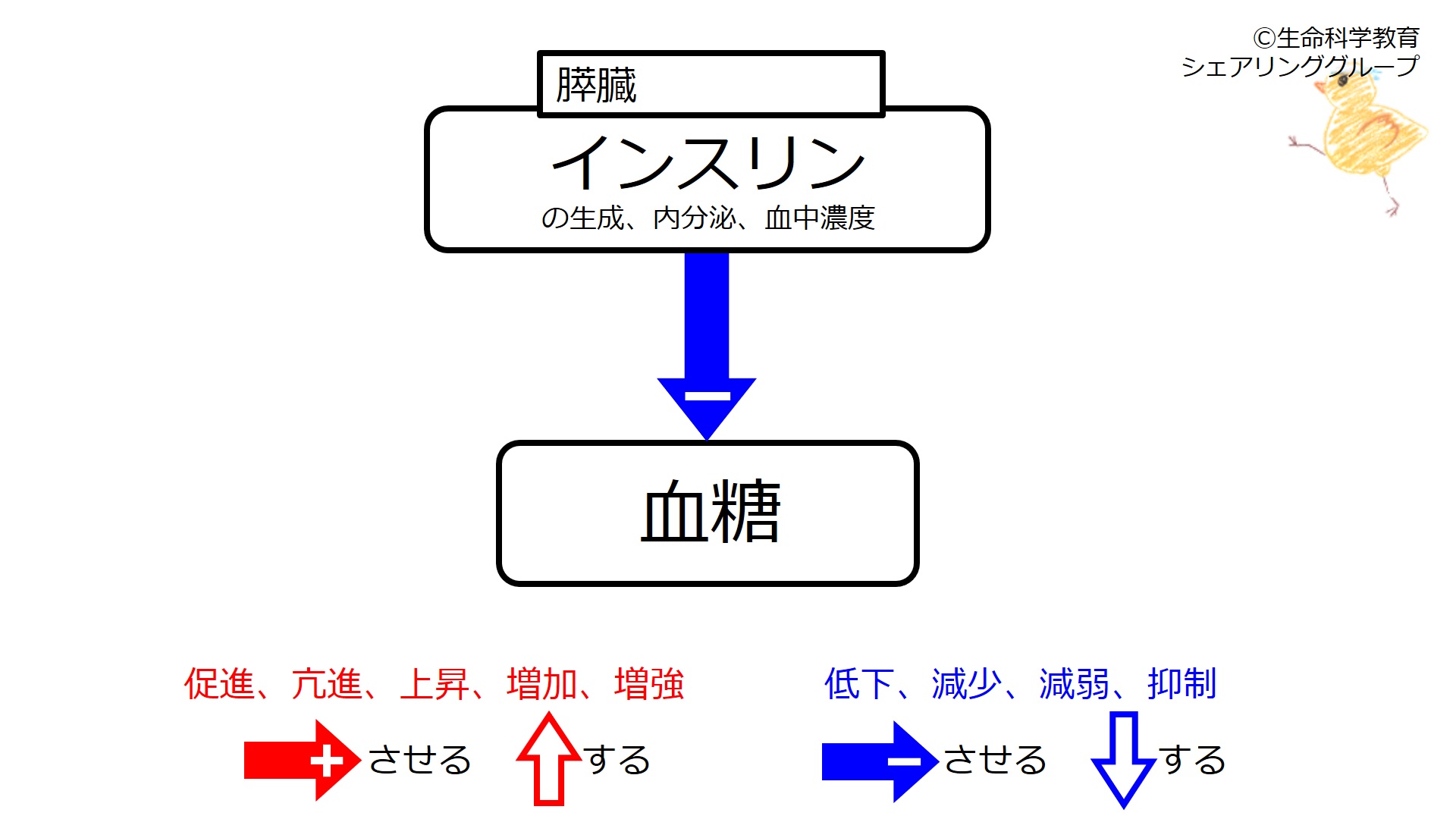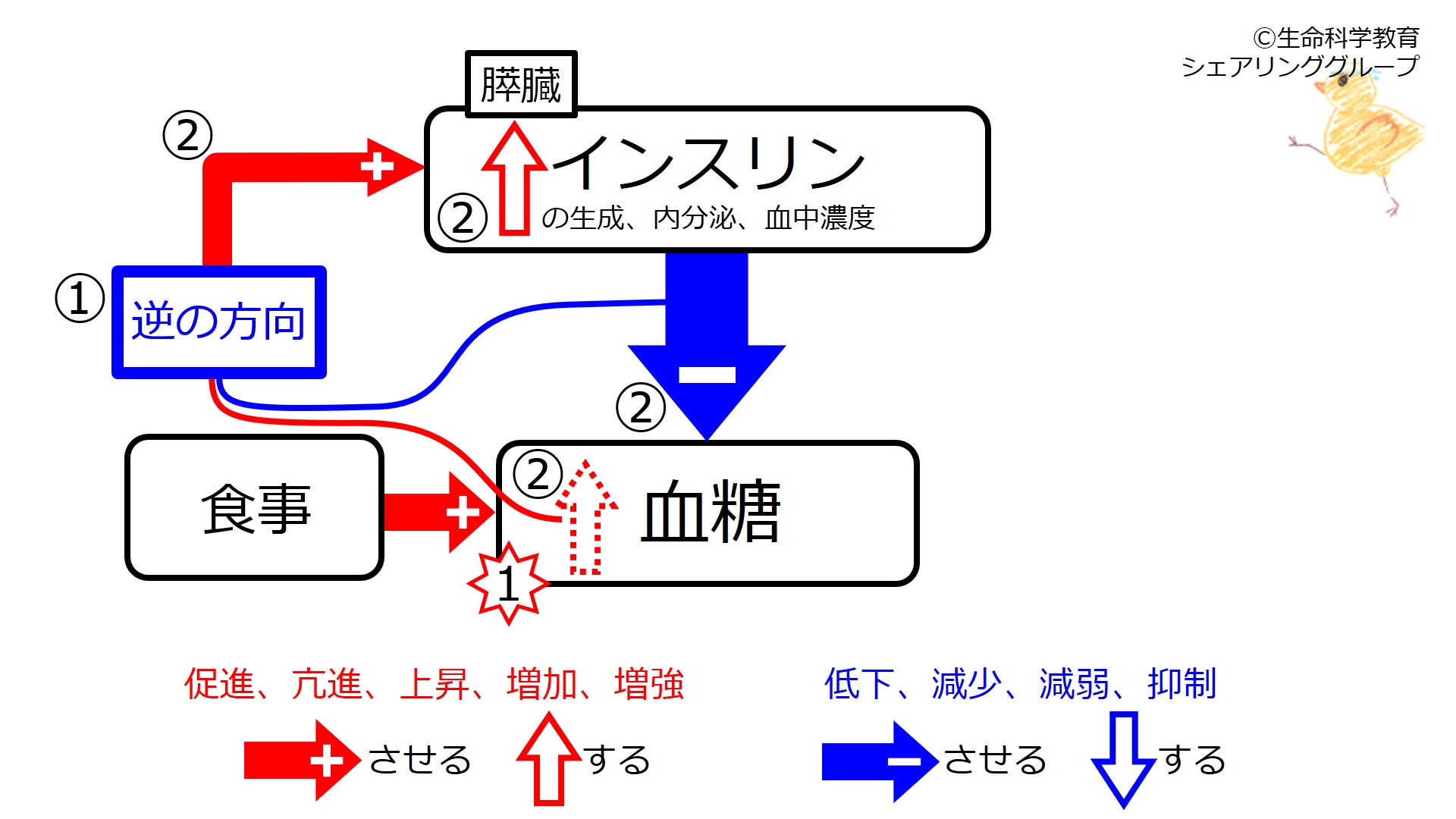| When blood glucose is increased, negative feedback facilitates insulin (synthesis, secretion, and concentration in blood). |
(Synthesis, secretion, and concentration in blood of) insulin decreases blood glucose. Before meal, insulin has certain levels of synthesis, secretion, concentration in blood, and blood glucose-decreasing effect.
① Subject had meal. Blood glucose is increased due to the meal. Insulin (synthesis, secretion, and concentration in blood) decreases blood glucose.These are in the opposite direction (blue).
② Since these are in the opposite direction (blue), negative feedback facilitates (red) insulin (synthesis, secretion, and concentration in blood). Because of this, the blood glucose-decreasing effect of insulin strengthens, and the increase in blood glucose (red upward unfilled arrow) disappears (increased blood glucose decreases to the baseline).
Similar to cooler (function) being increased when room temperature is increased (summer), this also is blue→red negative feedback.
Challenge Quiz
Blood glucose is increased decreased due to the meal, insulin (synthesis, secretion, and blood concentration increases decreases blood glucose. Since these are in the same direction opposite direction , negative feedback inhibits facilitates insulin. Because of this, the initial transition dissapears and the blood glucose increases decreases (towards the baseline).
When blood glucose is increased, negative feedback inhibits facilitates insuliln (synthesis, secretion, and concentration in blood).



